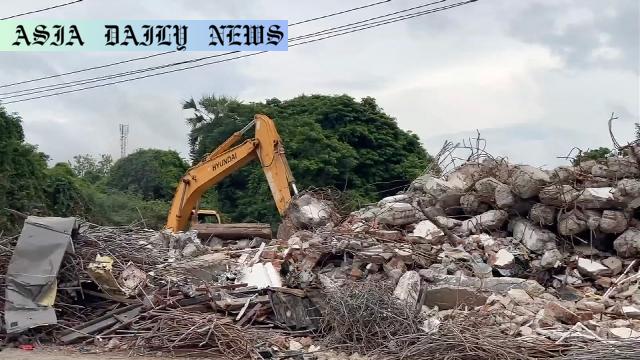Myanmar earthquake: People in Myanmar are still facing major challenges three months after a magnitude 7.7 earthquake struck the central region of the country.

Introduction to Myanmar Earthquake Crisis
The devastating magnitude 7.7 earthquake that struck Myanmar three months ago left long-lasting consequences for its people and infrastructure. According to the Myanmar junta, more than 3,700 lives were claimed and over 5,000 individuals were injured due to the natural disaster. The seismic activity largely impacted central regions of the country, including the Sagaing region and Mandalay, Myanmar’s second-largest city. Efforts to rebuild and recover have been met with challenges, amidst a growing concern of being overshadowed by other global crises.
The Impact on Lives and Infrastructure
The earthquake displaced around 200,000 people, leaving an estimated 50,000 individuals in temporary shelters that lack adequate resources and infrastructure. Many are still struggling to rebuild their homes and communities as rubble from collapsed buildings creates unsafe living environments. Furthermore, officials estimate that at least 1.5 million tons of debris need to be cleared to create livable and safe conditions for affected areas. Despite some initial aid from international organizations, critical gaps remain unaddressed, leaving many people without sufficient help or resources.
The UN’s Plea for Global Attention
Titon Mitra, head of the United Nations Development Programme in Myanmar, has passionately advocated for greater international attention and support. Expressing his frustrations, Mitra emphasized that this crisis must not be seen as forgotten but rather as neglected by global leaders and organizations. According to Mitra, rebuilding lives in Myanmar requires sustained global focus and on-ground assistance from governments and non-governmental organizations alike.
The Need for Long-Term Recovery Efforts
Reconstruction in Myanmar goes far beyond temporary fixes such as the provision of tents or other ad-hoc solutions. Long-term recovery will necessitate rebuilding schools, healthcare facilities, and key infrastructure while simultaneously addressing the psychological trauma faced by the survivors. The international community must ensure that Myanmar receives consistent support to fully recover and stand resilient against future challenges. Transparent communication, effective coordination, and sufficient funding are key ingredients to address the growing needs of earthquake-affected communities over the coming months.
Commentary
The Global Responsibility in Crisis Response
Disasters like the Myanmar earthquake serve as stark reminders of humanity’s shared responsibility to respond to crises, no matter where they occur. Situations like this demand not just initial responses but continued and committed effort to ensure relief, recovery, and rebuilding. Unfortunately, the Myanmar crisis exemplifies how initial media attention and international aid often dwindle over time, leaving thousands of individuals struggling to rebuild lives on their own.
Amplifying Awareness Amid Global Distractions
In today’s news landscape, crises in one corner of the world quickly lose attention as others arise. However, neglecting one crisis in favor of another creates a chain reaction of unresolved challenges and unfulfilled promises. Myanmar’s earthquake survivors deserve the world’s attention as much as anyone else facing adversity. It is imperative for media outlets, policymakers, and advocacy groups to keep this issue in the spotlight, reminding the world that real people endure these challenges long after news coverage fades.
The Role of the United Nations and Global Communities
The advocacy efforts of figures such as Titon Mitra are commendable, but they cannot stand alone. Governments, international non-profits, and even individual citizens can and should play their part in rebuilding Myanmar. Contributions don’t always have to be monetary; amplifying awareness through campaigns, utilizing platforms to advocate for action, and leveraging expertise are just a few ways anyone can contribute positively. This coordinated effort will determine the speed and success of Myanmar’s recovery journey, setting a global example of solidarity and humanity.


